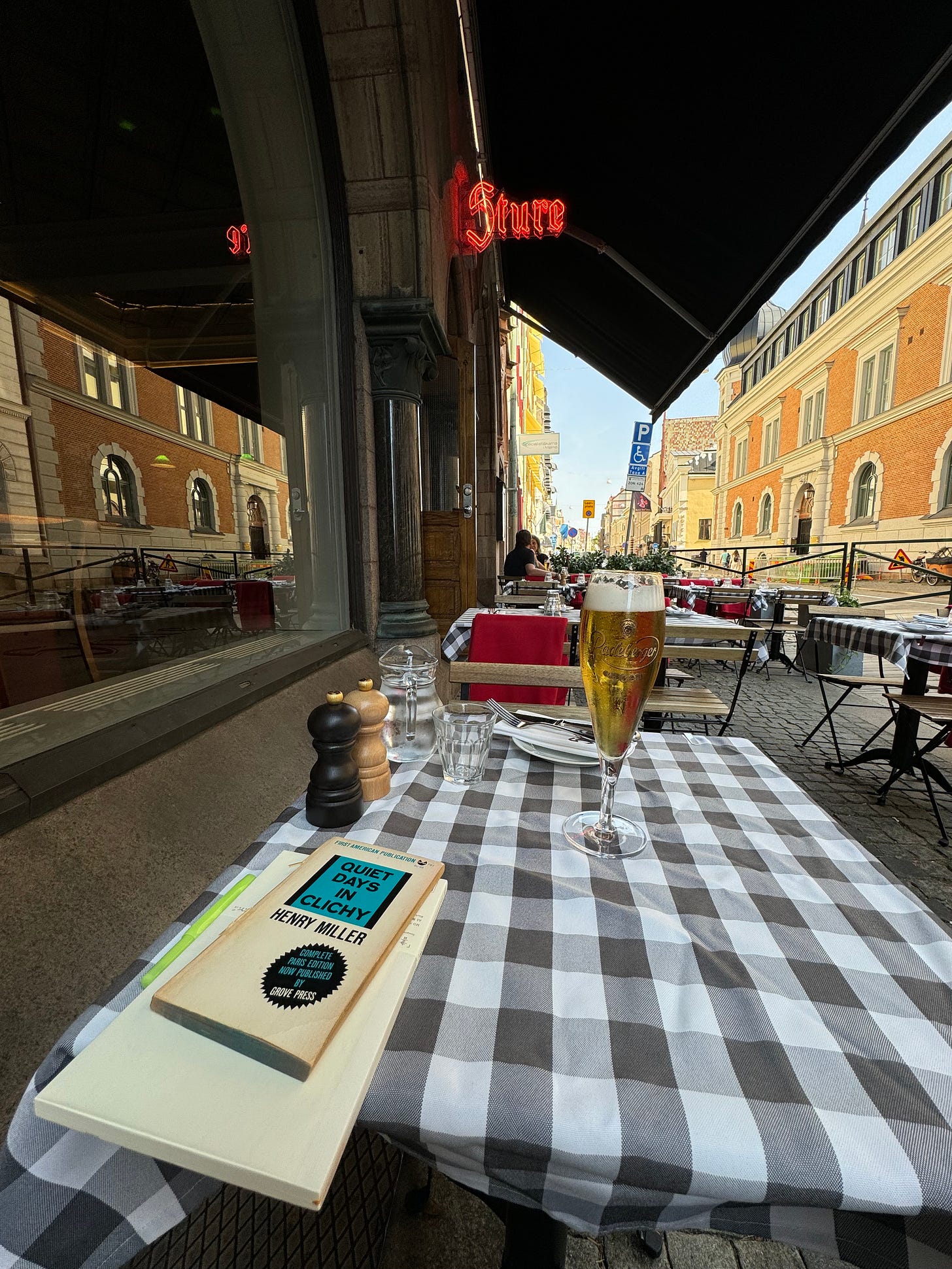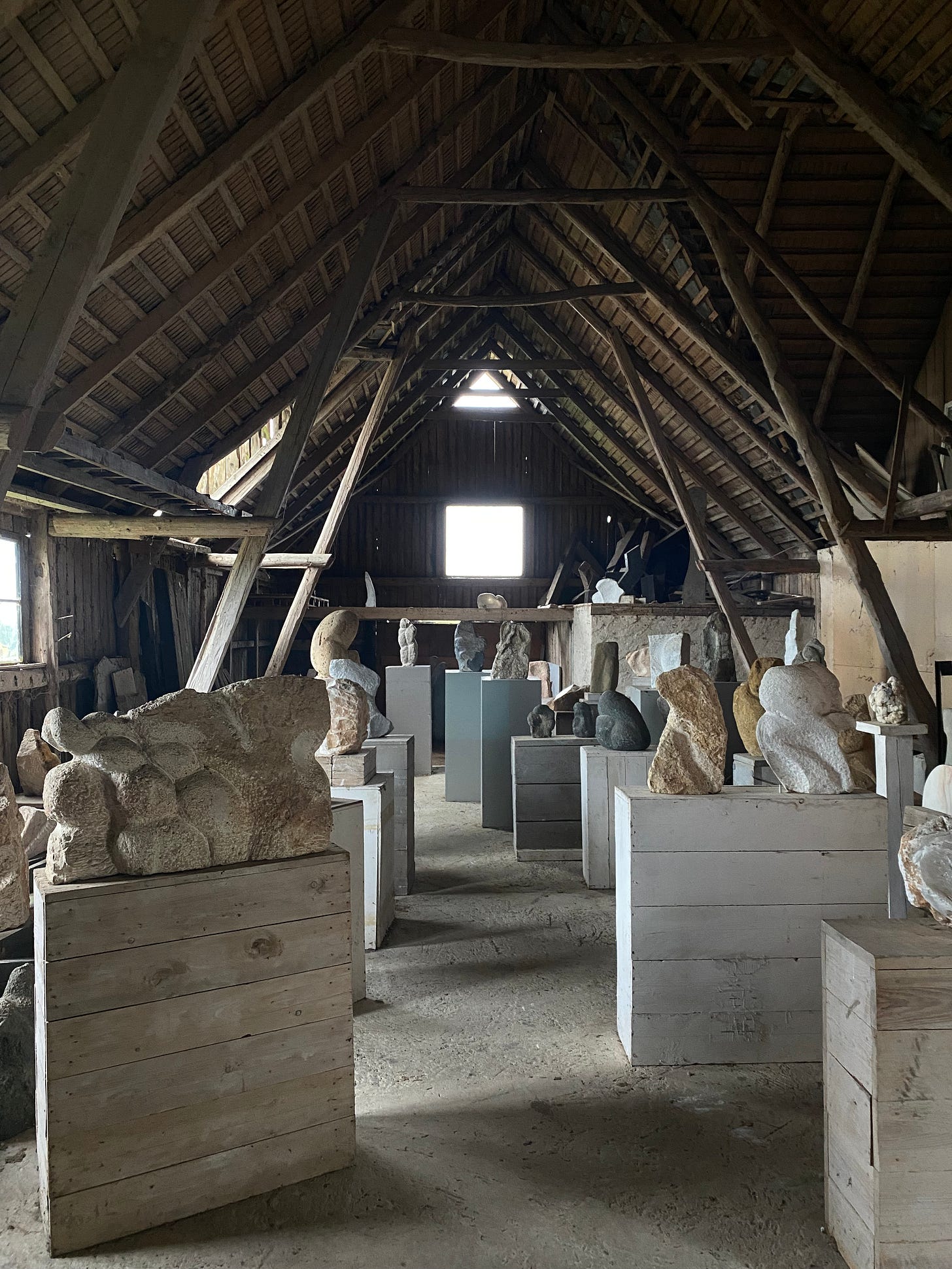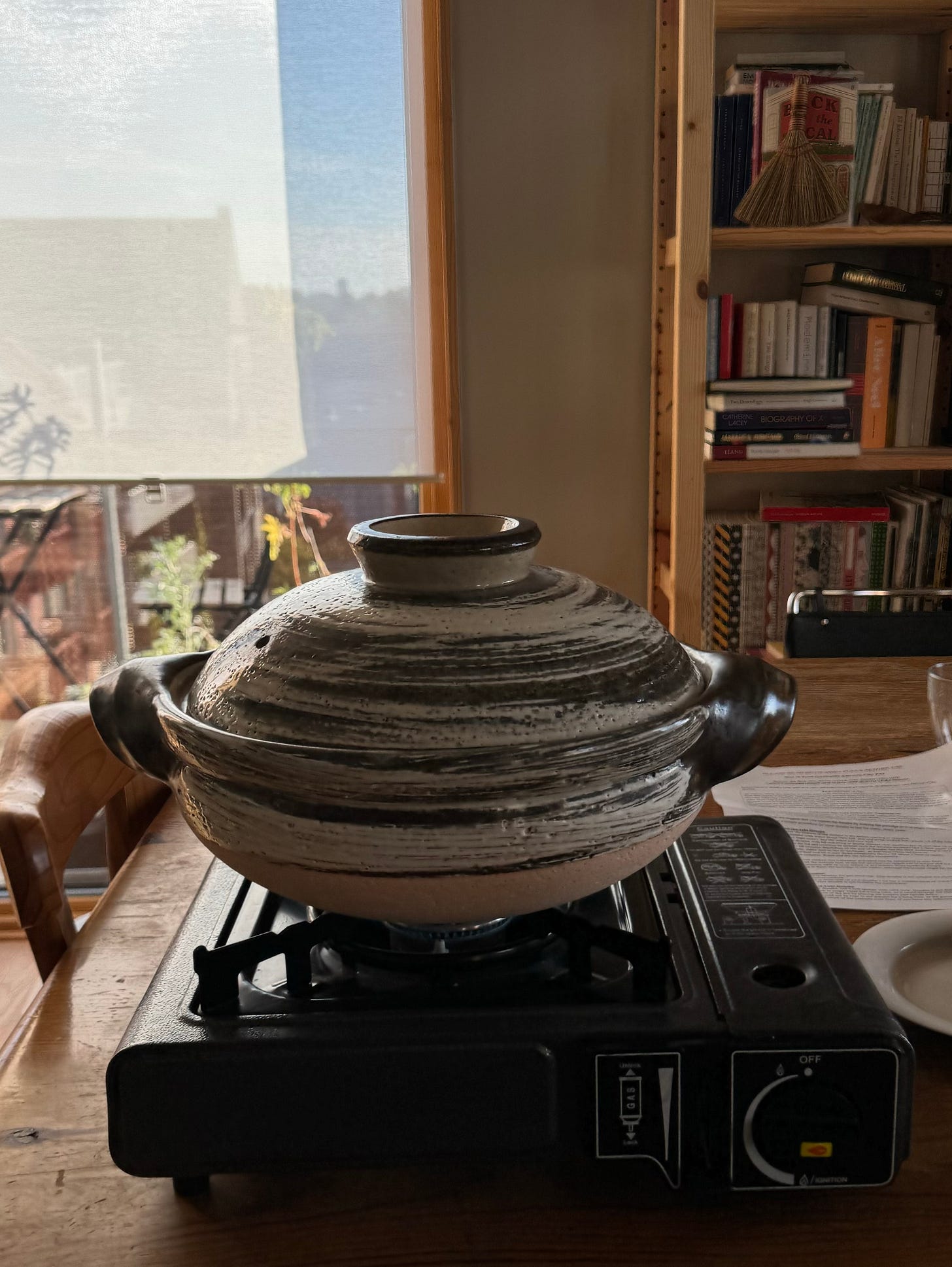Annotations: Week 4
Let me tell you about a simple, life-saving dish to get you through these last summer evenings.
Being out about about squeezing out the last drops of summer can really take the fun out of cooking dinner. It’s a case of more pressing matters—last swim, last beer on a terrace in the sun, last call for this and that.
I consider this a bit of a life hack all year round, when you don’t really feel like cooking, or even eating a substantial meal. It offers the same kind of satifaction as eating a peach over the sink for lunch. Always keep a bit of chickpea flour on hand. Get in from work, whisk together a batter, go out for a few hours, and come back feeling peckish and ready for a farinata.
It’s crispy, salty, perfect eaten from a cutting board, with a Campari soda, with or without company. It can be topped with all kinds of things, Restaurant Babette in Stockholm tend do it really well, but I prefer mine as is, with some prosciutto to finish, or with a few slices of artichokes added to the pan when pouring the batter.
Last year, we joined a few friends in commemorating the life of Swedish artist Staffan Nihlen—opening his house and studio for one last day before it being disassembled and sold. Staffan lived in Liguria in the sixties (and shared a studio with Cy Twombly in Rome!). Our homage to that era was to make about 60 farinatas for guests throughout the day. Great success. Life-saving farinata indeed, it was a bit of a trek out there.
Life-saving farinata for the last days of summer
150 g chickpea flour
500 ml warm (not hot!) water
1 heaped teaspoon of flaky salt
3 tbsp good olive oil + more for frying
A sprig or two of fresh rosemary
Start by making the batter. Pour the water into a bowl, whisk in the chickpea flour so there’s as few lumps as possible. Add salt, stir, and cover with a towel. Let it stand in a warm place and forget about it for an hour or two.
Heat the oven to a really high temperature. I set mine to 250-275 degrees (celcius).
Remove any foam that might have formed on top of the batter, and stir in 3 tablespoons olive oil.
Find a frying pan that works in the oven—I use a cast iron one. Pour in a tablespoon of olive oil, place in oven, and heat until the oil just begins to smoke. Pour in a ladle or less of batter and swirl. The farinata should be really thin.
Sprinkle with a few rosemary leaves and return to the oven. Bake until golden brown and crisp at the edges, about 10 minutes. Sprinkle with salt.
Cut into 6 pieces, savour with a glass of cold wine, and repeat.
Currently cooking
These weeks have been…distracting. The onset of autumn was delayed by two delirious weeks of 30 degree heat, restlessness and sweat. It messed with an appetite for the season, the newly arrived mushrooms giving way to another wave of late summer tomatoes and basil.
Rain finally broke today, cutting the temperatures by a third. I’m ready for a change.
Got around to seasoning a donabe that I received as a birthday gift from my dear friend Mimmi. It’s a beautiful, heavy, porous clay pot. Made for simmering hot pots, light and heavy alike, with miso, the first kabocha squash, or freshly made udon. KILN’s clay pot noodles (swoon!). Rice steamed and flecked with fragrant dried mushrooms, or maze gohan, Japanese style mixed rice.
Those of you in or close to Malmö will be thrilled to hear that my mates Emi and Junko aka Malmö Udon were recently able to acquire an old fashioned noodle machine from Yoshiki Aihara’s (aka Mr. Rue Saint-Anne) former restaurant in Belgium. It now lives in Mygel’s attic, where they make fresh udon noodles every Monday. Soon, these will be for sale to take home via their Instagram profile. Keep an eye out for a Japanese home cooking pop up at Sauvage in October too.
Talking about Japanese home cooking, Miho (pictured above, cooking dashimaki for lucky us) is continuing her Friday and Saturday evenings at Copenhagen’s finest establishment, Dzidra, until the end of September. Her tamagodon, potato croquettes, and rhume-shiso onigiri are heaven-sent.
Currently listening/watching
Slightly moodier stuff playing at home these days. Lots of Tara Clerkin Trio, which always hits the spot.
Late August and September means TIFF and Venice Film Festival to me—from a distance—I try to keep an eye on what to watch in the coming year. Podcasts are great way of keeping up with the best (and the worst). My favourite the past decade has been Filmfrelst (in Norwegian) and their nothing short of brilliant reports from Venice. A cross-section of The Guardian, New Yorker and Variety reviews usually gives you a sense of what to make of it all. I’m excited for the beautifully shot Vermiglio by Maura Delpero, and to see if I can tolerate the 3 hour post-war architect epic that is The Brutalist by Brady Corbet.
Currently reading
I tend to haunt the city’s second hand book shop, no matter which city I am in. I used be intimidated by its characters, now I find it is a good occasion for banter about books and life in general.
A recently haul consisted of an early (and very raunchy) Henry Miller novel, Lucy by Jamaica Kincaid, Art by Bloomsbury Group art critic Clive Bell, Please Miss: A Heartbreaking Work of Staggering Penis by Grace Lavery, and William Morris’ utopian works of fiction imagining what a better/different world might actually look, feel, smell, sound, and taste like, News from Nowhere and The Wood Beyond the World. Olivia Laing’s The Garden Against Time brought my attention to Morris’ writing, another relatively recent book definitely worth your while.
I think that mix has something to say for the tiny but eccentric book scene in Malmö. I recommend stopping by Anti (both second hand and new books in Swedish and English), Andy’s Corner (a really great selection of second hand English language books!), and Bokfinken next door (their arts and crafts section is top).
Last bits
First: how good is the new season of Industry! I love great shows that crest around in their third season—I’m looking at you, Hacks.
I’m headed to Warsaw later this week for a story, and am feeling extremely excited about it. A top of my list is to eat as much traditional season food as possible—cold beetroot soup, smoked Kielbasa with sourdough bread and a little beer, Polish baked goods, the list goes on. To see the farmer’s markets that have been around for years and others that have sprouted back up. Milk bars and natural wine haunts. Bookshops and makers’ workshops. I have a feeling that this is the first of many trips to Warsaw... Let’s debrief in next week’s newsletter!
In other news, I will open the newsletter to paid subscriptions as of mid-September, at a 4-5 euros a month for additional access to recipes, guides, and more. It allows those who enjoy what you’ve read so far to support the work, and enables me to continue focusing on developing the newsletter. I’m looking forward to adding interviews to the mix, nothing better than speaking to interesting people about what they do over lunch.
Until next week!
Alisa











